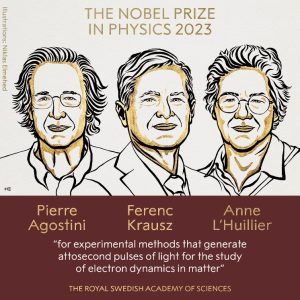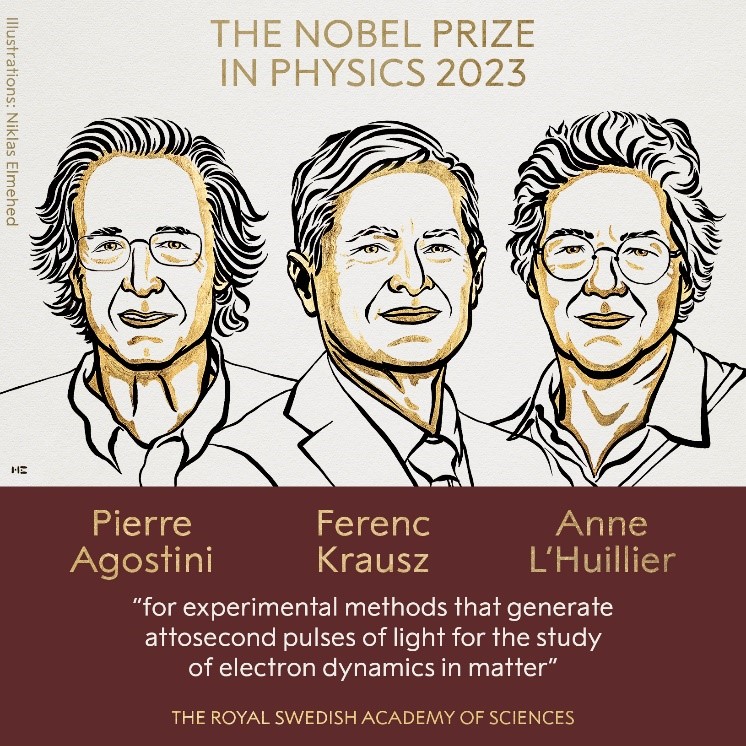Nobel prize 2023 in physics for attosecond pulse generation
The Laboratoire d’Optique Appliqué enthusiastically congratulates our colleagues Pierre Agostini, Anne L’Huillier and Ferenc Krausz to the Nobel Prize in Physics 2023, for their contributions to the first generation of attosecond light pulses.

This Nobel prize puts the spotlight on the field of Attosecond Physics, of which the plateau of Paris-Saclay continues to be a stronghold, and which LOA’s PCO and FLUX groups continue to push forward within the Institut Polytechnique de Paris.
We are proud of the fact that it was one of the highest-power kHz-repetition-rate lasers at the time and its associated high-harmonic generation setup, both built and run at LOA, that enabled the first measurement of a train of 250-attoseconds long XUV pulses with the so-called RABBIT method [P.M. Paul et al., Science 292, 1689 (2001)], for which the Nobel prize was awarded. The team, led by Pierre Agostini, was a collaboration of scientists of CEA Saclay (Pierre Agostini, Pierre-Mary Paul, and Pierre Breger), of FOM Amsterdam (Harm-Geert Muller and Elena Simona Toma), and of LOA (Philippe Balcou, Geneviève Mullot, and Frédérika Augé).

This experiment was only one out of many in the long joint experimental effort made at LOA (then directed by André Antonetti) in close collaboration with Pierre Agostini’s CEA-group and Harm Muller’s FOM group, on the measurement of the ultrafast temporal structure of the high-harmonic emission [J. M. Schins et al., J. Opt. Soc. Am. B 13, 197 (1996); A. Bouhal et al., J. Opt. Soc. Am. B 14, 950 (1997); A. Bouhal et al., Phys. Rev. A 58, 389 (1998); E. S. Toma et al., Phys. Rev. A 62, 061801 (2000); L. C. Dinu et al., Phys. Rev. Lett. 91, 063901 (2003)].



